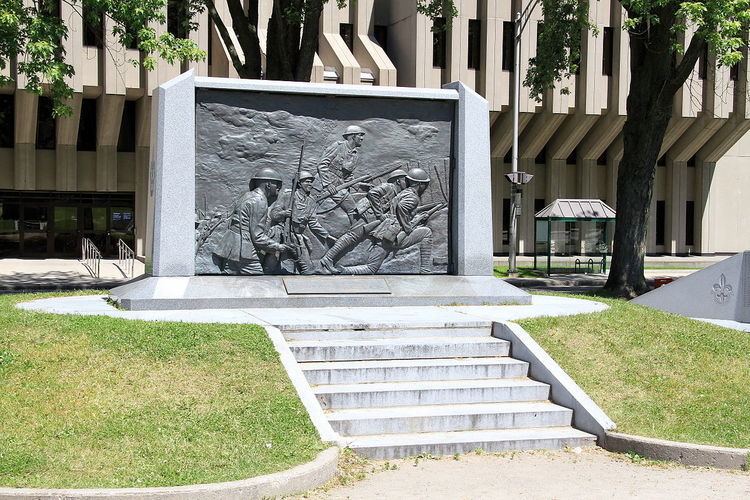Type Drill Hall / armoury Destroyed 2008 (fire) Province Québec Construction started 1885 | Completed 1888 Opened 1888 Owner Canadian Armed Forces Architect Eugène-Étienne Taché | |
 | ||
Awards and prizes National Historic Site of Canada;Canada's Register of Historic Places; Classified - 1987 Register of the Government of Canada Heritage Buildings Address 805 Wilfred-Laurier Ave, Québec City, QC G1R 2L3, Canada Architectural style Gothic Revival architecture Similar Plains of Abraham, Citadelle of Quebec, Joan of Arc Garden, The Battlefields Park, Maison des Jésuites de Sillery | ||
The Voltigeurs de Québec Armoury, formerly Grande-Allée Armoury (French: Manège militaire Grande-Allée, or simply Manège militaire), was built as a Gothic Revival drill hall for the infantry regiment Les Voltigeurs de Québec at 805 Wilfrid-Laurier Avenue East, Quebec City, Canada. Designed by architect Eugène-Étienne Taché and constructed between 1885 and 1888, it is a National Historic Site of Canada.
Contents
Partially destroyed by fire in 2008, the armoury has received a commitment from the Canadian national government to be rebuilt by 2016.
History
In the Canadian Forces, an armoury is a place where a reserve unit trains, meets, and parades.
"JE ME SOUVIENS" (1989) by André Gauthier, a 6’ X 9’ bronze 'haut-relief' bronze and granite wall memorial, was erected at Place George V in front of the armoury. Unveiled on November 11, 1989, the sculpture honours the memory of the soldiers from the Royal 22e Régiment (R 22e R) or Van Doos French Canadian regiment who were killed during the First and Second World Wars and the Korean War. The sculpture was inspired by A.T.C. Bastiens' painting "L'Avance" at the Canadian War Museum. The names of soldiers are inscribed in granite on the monument.
Fire
The Voltigeurs de Québec Armoury was destroyed by a fire on April 4, 2008. All but a rear wall and turrets beside the front door were burned. Les Voltigeurs de Québec Museum in the amoury which housed various artifacts from the regiment was also lost in the fire. However, officials estimate that 90 percent of the artifacts were saved due to the efforts of members of the regiment and local firefighters. The armoury was to have been one of the venues for the celebration of Quebec's 400th birthday. The armoury's wooden roof was one of the largest of its kind in Canada.
Calls have been made by politicians to rebuild the armoury, to which the federal government has responded positively by allocating $2 million for reconstruction planning. In the fall of 2008, the regimental association launched a lawsuit against the Department of National Defence, blaming negligence on the part of the federal government for the blaze. In 2010, Intergovernmental Affairs Minister Josée Verner announced federal plans to rebuild the armoury by 2016.
Plaque
A Historic Sites and Monuments Board of Canada plaque was erected in 1991 to commemorate the Grande Allée Drill Hall and its architectural uniqueness.
The Grande Allée Drill Hall is an impressive example of a drill hall that retains its original parade square. Designed by Eugène-Étienne Taché, a Quebec public servant and architect, the stone building was completed in 1887, with an addition in 1913. The steeply pitched gable roof, conical towers and fanciful decorative details of the drill hall make it an early example of the French-inspired Château style. The use of the style here is unique among Canadian drill halls of this period and reflects the late 19th century interest in the historic French roots of the city.
